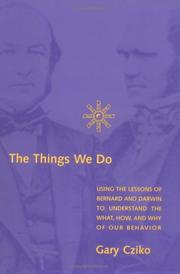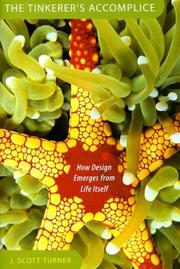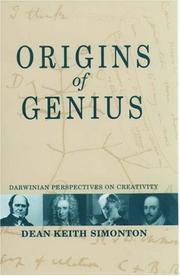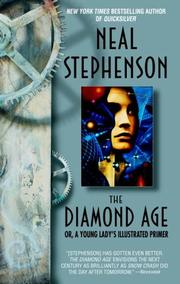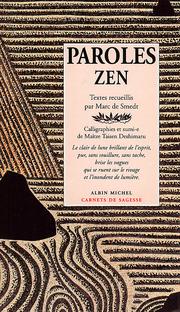The Things We Do: Using the Lessons of Bernard and Darwin to Understand the What, How, and Why of Our Behavior by Gary Cziko - ISBN 0262032775 - MIT Press & Gary Cziko 2000
note that this was finished much earlier but without recall, recall starts a month before the current date to already start with very spaced recalls
Motivation
Reading Gary Cziko earlier book Without Miracles: Universal Selection Theory and the Second Darwinian Revolution (published by MIT Press as a Bradford Book in 1995) raised from interest in universal darwinism and finding it brillant.
Pre-reading model
Draw a schema (using PmGraphViz or another solution) of the situation of the area in the studied domain before having read the book.
Reading
- 1. Introduction and Overview
I. Theories of Behavior: From Psychic and Purposeful to Materialist and Purposeless
- 2. Philosophical Perspectives on Behavior: From Animism to Materialism
- 3. Psychological Perspectives on Behavior: From Purposeful to Purposeless
II. Purpose Without Spirit: From Constancy of the Internal Environment to Perceptual Control of the External Environment
- 4. A Biological Perspective on Purpose: The Physiology of Bernard and Cannon
- 5. The Engineering of Purpose: From Water Clocks to Cybernetics
- 6. A Psychological Perspective on Purpose: Organisms as Perceptual Control Systems
III. Behavior and Evolution: Then and Now
- 7. The Evolution of Animal Behavior: The Impact of the Darwinian Revolution
- 8. The Evolution of Human Behavior: The Darwinian Revolution Continued
- 9. Evolution Within the Body: The Darwinian Lesson Extended
IV. Bernard and Darwin Meet Behavioral Science: Implications and Applications
- 10. Understanding Adaptive Behavior and Thought as Purposeful Evolution: Combining Bernard and Darwin
- 11. Behavioral Science and the Cause-Effect Trap
- 12. Applying the Lessons of Bernard and Darwin to Behavioral Theory, Research, and Practice
Overall remarks and questions
Synthesis
So in the end, it was about X and was based on Y.
Critics
Point A, B and C are debatable because of e, f and j.
Vocabulary
(:new_vocabulary_start:)
new_word
(:new_vocabulary_end:)
Post-reading model
Draw a schema (using PmGraphViz or another solution) of the situation of the area in the studied domain after having read the book. Link it to the pre-reading model and align the two to help easy comparison.
Earlier notes
- Does Varela reference Claude Bernard?
- especially since he said sth close to "perception drives action" in a loopy way (have to quote it), precisely what Varela proposed (have to quote too)?
- seems not but despite that sometimes uses the concept of homeostasis
- Why does Cziko does not reference Varela?
- Why no reference to enaction in general?
- it seems that enaction was only starting to be developed at that time and was not very popular
Could even be a good model for relationship : you extend your circle (metaphor for homeostasis) to include someone else. One classical example is that you expect and appreciate when someone cares for you, as if his survival was mutually dependant, thus extended bernardism.
bernardism
- advantages of cycles
- being able to leverage the generated momentum, in a way, is this the EvoDevo principle?
- disadvantages
- unable to break the momentum
- inspired by "hijacking" plants mechanisms for nutrition yet, necessity to water them constantly
Can we consider all biotechnologies, from agriculture to bioengineering, as technology related to life and thus on managing Bernard's cycles (homeostasis)?
Can it be extended to synthetic cycles like loops and recursion in programming?
See also
sent him an email the 07/05/2011 regarding a typo on his page, thanked the very same day
Back to the Menu
Categories
Other read books linking to the TheThingsWeDo page :
Back to the Menu
 Fabien Benetou's PIM
Fabien Benetou's PIM






